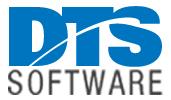As inquiries brought on by COVID-19 strained state unemployment systems past their breaking points, the Common Business-Oriented Language (COBOL) they were built with got an unfair share of the blame. It’s true that COBOL is legacy—its origins date back to a 1950s effort by the Department of Defense—but it’s also no accident that the coding language has lasted this long.
Reliability and portability have been hallmarks of COBOL since its inception. The industries that rely on it, including finance, aerospace, and ecommerce, are the surest evidence. For example, you probably can’t remember the last time you got an error message at the ATM (besides “insufficient funds,” of course). That’s because COBOL is behind the scenes processing an estimated 95% of all ATM transactions. Indeed, a Reuters report from 2017 estimated that COBOL powered 80% of all in-person transactions as well.
It’s difficult to grasp the magnitude of the language, but the 220 billion lines of COBOL being used in production environments around the world are handling $3 trillion in commerce every single day! It’s clear that COBOL is functioning fine and will continue to do so as long as compatibility to hardware and OS updates is maintained. The question is who will meet those needs as veteran COBOL programmers retire?
Keeping COBOL Going
According to a survey of 119 universities (primarily in North America), just 18% included COBOL as a core part of the computer science curriculum while another 9% offered COBOL courses on an elective basis. The Syracuse University School of Information Studies is one of the former, and associate professor David Dischiave explains why: “I professionally think that COBOL is alive and well and has been. I think there are a lot of people who want to put a stake in its heart and kill it and I don’t know why.”
IBM doesn’t know why, either. As universities fail to address the growing demand for COBOL programmers, Big Blue has stepped in to pick up the slack. Between 2005 and 2017, IBM programs and fellowships trained an average of 15,000 new COBOL developers each year. As one IBM fellow explained to Reuters, “Just because a language is 50 years old doesn’t mean that it isn’t good.”
IBM hasn’t let COBOL collect too much dust, either. Updates and iterative improvements over the years have enabled COBOL to function more effectively than ever before. The latest version, Enterprise COBOL V6, is designed to make use of the latest and greatest mainframe hardware unveiled with the z14 and z15 releases.
To keep its customers moving toward the latest versions, IBM announced end of support (EOS) dates for Enterprise COBOL V4 and Enterprise COBOL V5. The latter has already come and gone, and the April 30, 2022 EOS date for COBOL V4.2 will be here soon enough. The organizations that make the upgrade and recompile programs in the latest versions of COBOL V6 will enjoy improved optimization and resulting increases in program execution speeds along with continued support.
Companies can feel more confident in their COBOL investments with IBM stepping in to update both the language and the workforce behind it, but the work is far from complete. There will still be a resource shortage to keep COBOL running without incident, and COVID-19 should be further proof of that.
DTS Software products help mitigate the mainframe skills gap by providing simple-to-use automation tools that eliminate the need for expert programmers. Sign up for a complimentary analysis of your ACS Routines or DTS Policy Rules today and a member of the DTS Software technical staff will look for possible performance issues and provide suggestions on how to make the code more efficient. Sign up here.


